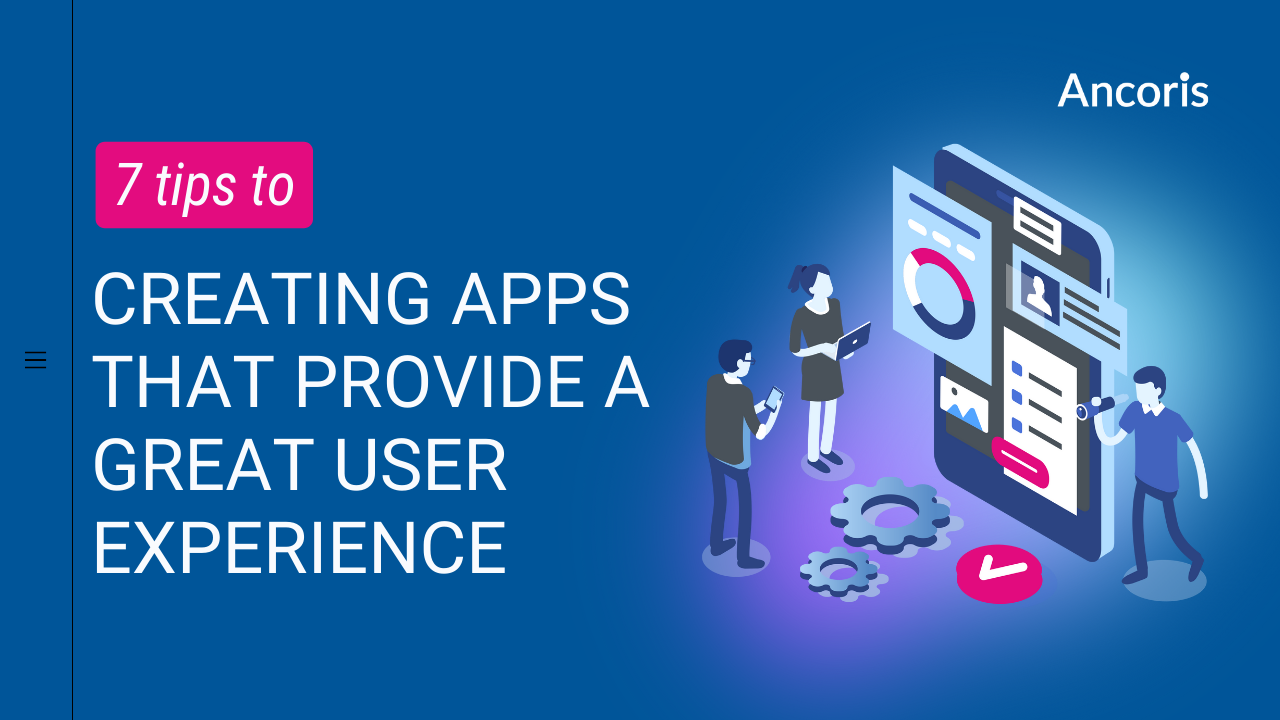Creating apps that provide a poor user experience (UX) can have a big impact on your bottom line. Recent research by SAS has revealed that a third of digital customers will abandon brands that deliver just one bad experience — but Forrester Research found a well designed user interface can raise a website's conversion rate by up to 200%.
Cosmetics company Avon had to abandon a $125 million order management system after its representatives started quitting in droves when the system was first rolled out in Canada.
Research across multiple industries and over many years confirming that every pound spent on UX will deliver £100 in return, it's worth the investment.
Here are 7 tips for creating great user experiences:
1. Get to know your users
Good user experiences are based on understanding the different personas or roles in your user base. What specific tasks are they trying to accomplish — and how often — and what information do they need to do those tasks? How do they approach tasks and how does information need to be presented?
Your IT team and even the senior managers in a particular department won't know all the wrinkles and tricks that front-line employees or customers use. So you should take the time to talk to real users to ensure you get those insights. You should also pay attention to cultural factors and expectations, especially if you’re developing solutions that will be used in different countries.
2. Keep your users involved
It's vital you get feedback from users throughout the design, development and deployment of your apps. On average, almost half of developer time is spent on avoidable rework, according to research by IEEE. Being able to correct course as soon as possible will not only save you money during development but could also cut the time to launch by at least a third.
3. Get your icons right
Users are more reluctant to click on an icon if they're not sure what will happen as a result. It's worth spending a little extra time to make sure you've created a set of icons that are as simple as possible but easy to interpret, and that indicate different statuses clearly.
You can use commonly recognised icons like the magnifying glass for search, but you may need to develop custom icons. For example, when we worked with Rentokil to develop a mobile app for field technicians servicing pest control products installed at customer sites, we developed icons that allowed technicians to clearly see which installed products needed attention. Even if you're using "standard" icons, don't forget that icons need to be suitable for workers with common visual impairments like colour blindness.
4. Make your navigation match users' mental model
The importance of matching your user interface to the way your users think is demonstrated by the experience of a company developing an ecommerce site. It came up with two designs for navigation on the home page. One was based around how the company thought about its product lines internally, while the other was structured according to the way most users think about those products.
Usability testing found just 9% of people could successfully find what they were looking for when using the company's structure, compared with 80% using the users' mental model.
5. Use low-tech prototyping
Today's development tools make it easy to quickly whip up user screens, but using low-tech prototypes, based on card cutouts and inserts showing designs for each screen, is a great way to quickly refine your initial ideas.
They help users to focus on how the system will work, without getting hung up on a lack of back-end functionality. It's easy to switch between different designs — and easy to test design ideas while walking around in a typical real working environment. Once you've settled on a design, you can move on to formal usability testing to validate your design — as well as your choice of device and system performance — with a code-based version.
6. Keep up with the latest thinking
While many of the core principles of good user interface design have been around for decades, technology and user expectations have changed rapidly. For example, smartphones are now nearly ubiquitous. So it's no surprise that research for Adobe found three quarters of customers won't come back to an ecommerce site if it's not optimised for mobile.
In the workplace, more than half of employees are "Digital Natives" who expect enterprise applications to match the apps they encounter in their personal lives: socially connected, collaborative, flexible and mobile-first. So it's vital you stay on top of the latest user and technology trends and best practices.
7. Keep improving
If you've put UX at the heart of your development process, you should be able to launch an app that users love from the moment they start using it. But that's no excuse to rest on your laurels, whether you're adding new features or making tweaks based on new feedback. Adopting an agile methodology will make it easier for you to provide incremental improvements that ensure your app continues to provide a great user experience.
How can Ancoris help?
As you can see, creating great user experiences is not a matter of luck — but it's not easy. That's why we've created the Ancoris UXLab Customer Hub. It lets you tap into our experience of building award-winning apps that users love to create great user experiences for your own business.

